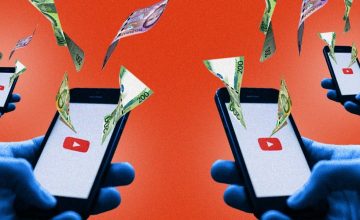Last Monday, the New York Times reported that Virgil Abloh, longtime creative director of Kanye West and founder of streetwear label Off-White, has been appointed artistic director of Louis Vuitton, one of the biggest luxury fashion houses in the industry.
These types of announcements aren’t new to the fashion industry. In the past few months, luxury fashion houses have been announcing transfers of creative directors like mid-season NBA trades: Hedi Slimane to Celine, Riccardo Tisci to Burberry, Kim Jones to Dior. While these announcements have been making rounds in media, none of it has been as talked about as the Virgil Abloh transfer to Louis Vuitton. And there’s a good reason why.
From Kim Jones walking out in a pair of unreleased Off-White Jordan 1’s with Virgil’s handwritten “VIRGIL WAS HERE” mark on the midsole to seeing Virgil casually throwing deuces on Jones’ IG Stories, both creative directors seemed to be dropping clues here and there to prepare the hearts of people for the imminent move.
Even if the news didn’t come as a surprise, the transfer was received with mixed emotions. The idea of someone who started his career in fashion making crack cocaine merch just five years ago taking creative control over one of the most prestigious luxury houses in the world seemed to leave a bad taste in the mouths of fashion’s elite and streetwear snobs. But can the reason why Virgil’s appointment to Louis Vuitton was met with disdain be the same reason this move may be the most significant fashion moment we’ve seen in years?
Virgil started his career as Kanye’s creative director in 2009 handling Ye’s concert merchandise, overseeing album art design, and playing an important role in one of street style’s most iconic photos.
Three years later, he released a set of screen-printed shirts under the brand Pyrex Vision, a nod to a brand of cookware that was commonly used for making crack cocaine. Pyrex eventually shuttered right after it was reported that Virgil was printing his logo on $35.99 Ralph Lauren Rugby flannels and flipping them for $550 – a move that was criticized in the fashion and design community, but praised by hood entrepreneurs everywhere.
The end of Pyrex was the beginning of Off-White, described by some as a haute streetwear brand that walks the thin line of high fashion and streetwear. The birth of Off-White came at a time when the worlds of high fashion and streetwear started to intertwine, appearing just a couple of years after Kanye wore a Givenchy kilt on the Watch The Throne tour and a couple of years before Celine released sneakers that looked exactly like Air Force 1’s.
In an interview with WWD at last year’s Complex Con, Virgil looks back at Off-White’s foundation saying “I can never forget my design premise. It’s in-between two things. So if I like high fashion and I like streetwear, Off-White is a reminder to be in the middle. I don’t have to choose between high fashion or streetwear. My brand reminds me that it doesn’t have to fit in a box. It can just be in a gray area.”
Since then, Virgil has been dominating the fashion industry working with Warby Parker, Moncler, and furniture brand IKEA, while consistently staging shows alongside luxury brands during fashion week around the world. The iconic Off-White industrial belt has been a staple in street style – even making its way to the outfits of our local influencers.
2017 was a huge year for Virgil. The release of “THE TEN,” a series of Nike’s most iconic sneakers, was his biggest and most important collaboration to date – one that cemented his place in sneaker and fashion history. But a couple of things also happened in the past year that foreshadowed Virgil’s move to Louis Vuitton.
The Supreme x Louis Vuitton collection was one that shook the fashion world and made headlines across the internet. Who would’ve thought that a skate brand known for its brash attitude and unforgiving political statements would one day work the largest luxury fashion houses in the world? It’s ironic that it even happened considering the fact that seventeen years ago, Louis Vuitton sued Supreme for using the LV monogram on their products. As extravagant as the collection and its reception was, the subtext of this moment is that the influence of streetwear on high fashion can no longer be ignored.
For the longest time, high fashion dictated what happened in culture and on the streets. But that hasn’t been the case in recent years.
For the longest time, high fashion dictated what happened in culture and on the streets. But that hasn’t been the case in recent years. At the Gucci Resort 2018 show, one of the biggest surprises were a couple of looks that paid homage to the work of Dapper Dan, a tailor who made his name creating luxury knockoff pieces for famous rappers, boxers, and gangsters during the mid-80’s in Harlem. He was eventually sued for copyright infringement and forced to closed down his business in the mid-90’s. But last year, Gucci released a campaign honoring Dan and contribution to the culture. The campaign eventually led to a partnership, in which Gucci helped Dapper Dan open up his very own atelier in Harlem, giving him all the resources he needs to create his own custom pieces. Except this time, using real Gucci material.
Another sign that street culture’s place in high fashion is finally getting the recognition it deserves came as a surprise for many when the CFDA (Council of Fashion Designers of America) announced that Supreme’s founder, James Jebbia, received a nomination for Menswear Designer of the year – an award traditionally reserved for the likes of Ralph Lauren, Tom Ford, Helmut Lang, and Raf Simons.
High fashion, for the most part, has always been an industry that catered to a certain elite. Which brings us back to our boy, Virgil, and his new position at Louis Vuitton. Virgil now joins the ranks of fashion’s most important group of people who carry the weight of an entire luxury house on their shoulders. But unlike the rest of them, Virgil didn’t come from a traditional designer background. He didn’t come from fashion school or have the privilege of being mentored by legends aside from his short internship at Fendi with Kanye back in 2006. But the main pushback from most critics is that he’s only been in the industry for five years.
Louis Vuitton is one of the world’s oldest and largest luxury houses that carry with it a very rich history. To hand over its reins to someone who hasn’t led another brand except his own poses a major risk on Louis Vuitton’s end, so it’s easy to understand why this appointment is a move many are still trying to make sense of.
While he still has a lot to prove, Virgil’s appointment to LV is a win for the culture.
While he still has a lot to prove, Virgil’s appointment to LV is a win for the culture. Virgil brings an authenticity from the streets that not many people in high fashion can bring to the table. This comes from the myriad of experiences he’s gained over the years and the relationships with the people he’s built and connected with. He’s deeply rooted in street culture, and has mentored many of the aspiring kids who are now making waves in the fashion industry.
His abilities also go beyond fashion design. He’s worked closely with people in the art, architecture, graphic design, and even music industry – making him the first and probably only high fashion creative director to DJ a set at Lollapalooza.
The appointment brings streetwear into the same conversation as high fashion, thereby redefining what high fashion means and making it more accessible, not just to anyone who can afford the product, but also to those who are truly passionate about it. He’s also breaking down barriers in the industry showing aspiring, young designers that the dream is now more accessible to anyone who is willing to work for it.
Marc Ecko, founder of Complex Network says in an interview with WWD, “I think the traditional gatekeepers of fashion, their time is done. There’s a new generation, a new cohort and new energy that’s very authentic and comes from really passionate people. People are passionate about design and culture. The design houses and brands are drawn to creative energy so they’re finding the source and they’re finding it inspiring. There’s a connection happening that’s a reorganization of luxury.”
The question of whether or not Virgil will be able to take the fashion house to a new level while protecting the legacy and heritage that its kept for years is a question that remains to be answered. For now, we’re excited to see how the acceptance of street culture will influence high fashion and possibly even take it to another level. Will that mean more wearable pieces and high end interpretations of streetwear staples? Or more conversation and partnerships between high fashion brands and the people who have been keeping them relevant.
I certainly have my doubts on whether or not the direction fashion is moving in will be good for business or how welcoming people will be to the idea of high fashion mixing so explicitly with streetwear. Only time can tell. But if anyone is more deserving to carry the flag of fashion’s next chapter, it’s Virgil Abloh.
Virgil’s first presentation with Louis Vuitton will be shown during Paris Men’s Fashion Week in June 2018. He will continue working on Off-White while holding his position at Louis Vuitton. Read more about the possible Off-White Manila store here.
by Paulo Reyes
Art by Bryan Sochayseng
























Comments